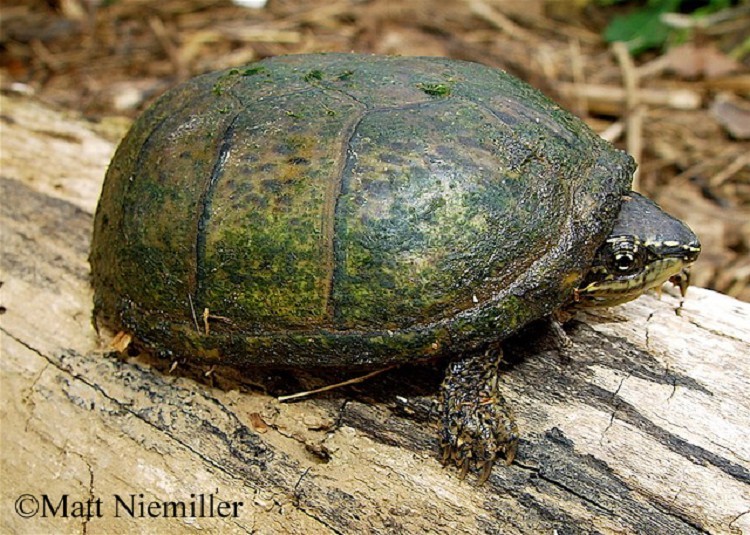Eastern Musk Turtle, Sternotherus odoratus
The Eastern Musk Turtle, also known as the “Stinkpot,” occurs from the Mississippi River to the Unaka Mountains; absent from many central and northeastern counties.
Description: A small, aquatic, dark turtle (2.0 to 4.5 inches in length) with a smooth, domed-looking shell. Carapace (upper shell) is long and varies from light olive brown to nearly black. The sides of the head have 2 distinct light-colored stripes and barbels (fleshy nodules) occur on the chin and neck. The small plastron (lower shell) is yellow or yellowish-brown and has a single horizontal hinge towards the front. Males have a longer and thicker tail. Young have a prominent keel running down the center of the carapace.
Similar Species: Stripe-necked Musk Turtle has dark, prominent stripes on the side of the head and barbels on the chin only. Eastern Mud Turtle has 2 hinges on the plastron – one in the front and one in the rear.
Habitat: Prefers permanent water bodies with available shallow water and plentiful aquatic vegetation including rivers, streams, sloughs, and ditches. Also, found in temporary water pools, wetlands, and small ponds.
Diet: Crayfish, minnows, tadpoles, fish eggs, algae, aquatic insects, and carrion.
Breeding information: Adults court and breed in spring and summer. Females lay up to 6 clutches per year producing 2-5 small, white eggs per clutch. Females do not dig their own nests, but rather place eggs in stump holes, under dead leaves, or in rotten logs. Eggs hatch after 2 to 3 months.
Status in Tennessee: Appears to be common in its known habitats across Tennessee.
Fun Facts:
- Commonly known as the “Stinkpot” because of the unpleasant odor released from musk glands, located along their sides, as a defensive measure.
Best places to see in Tennessee: Shallow streams and rivers in the Tennessee River system and Mississippi River coastal plain.
